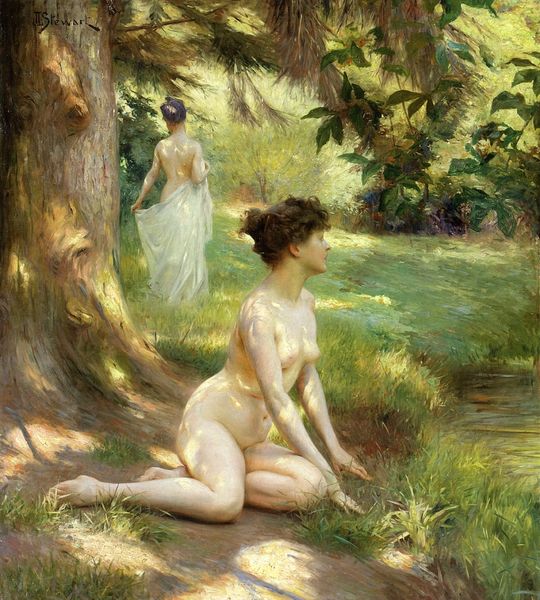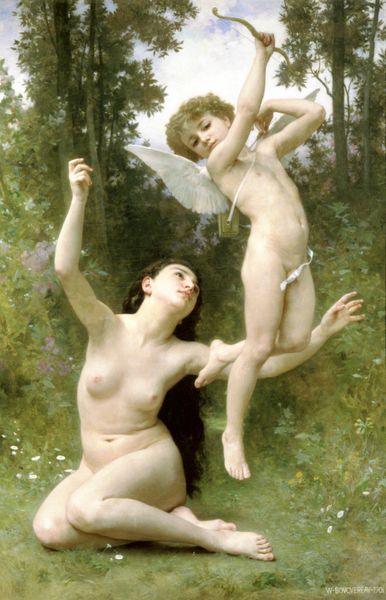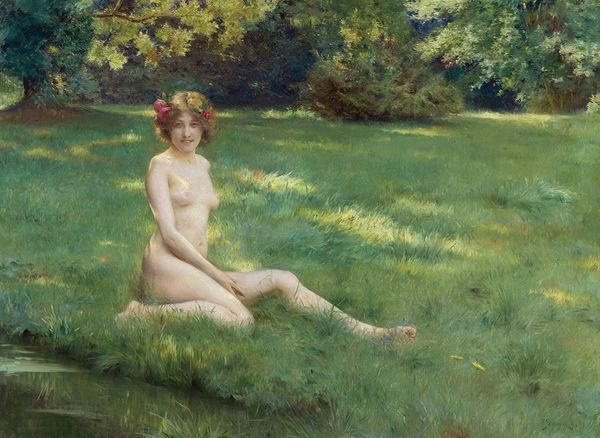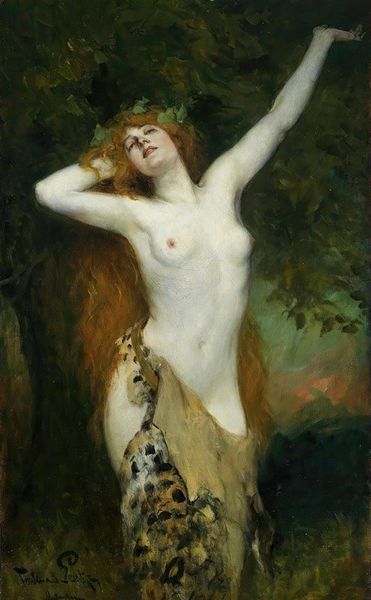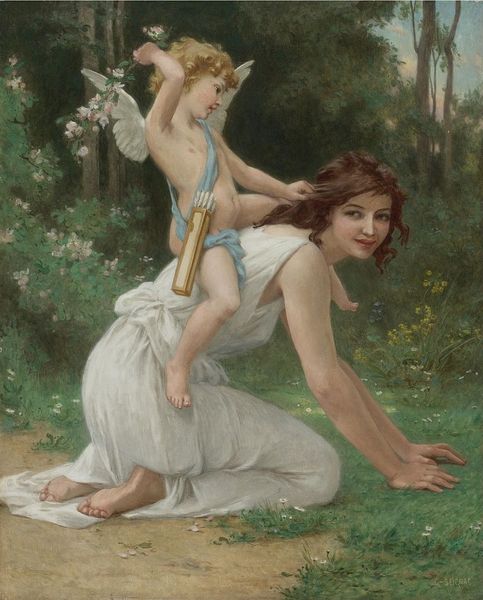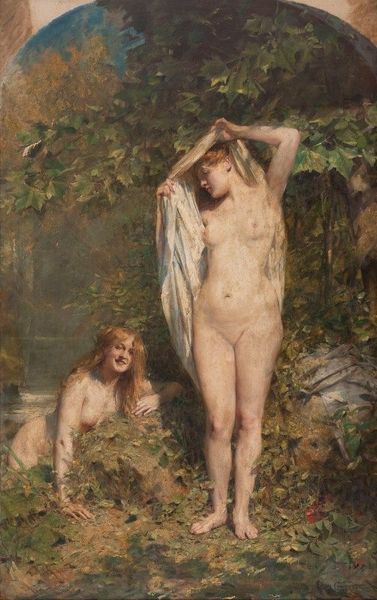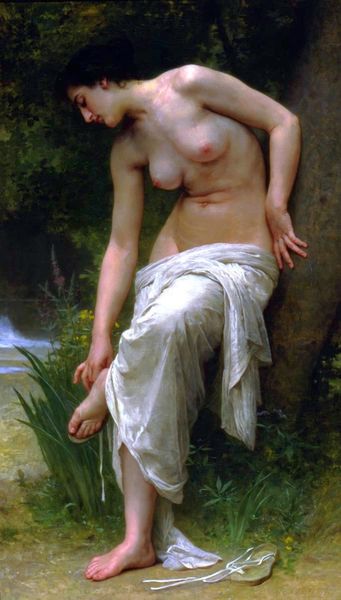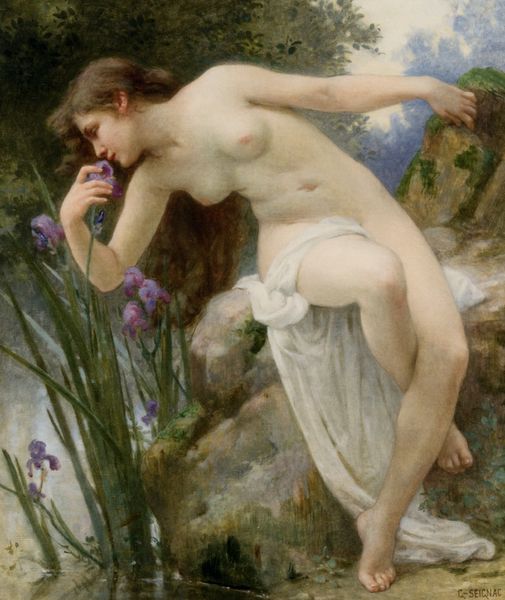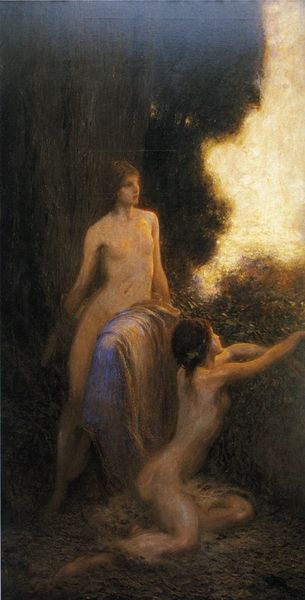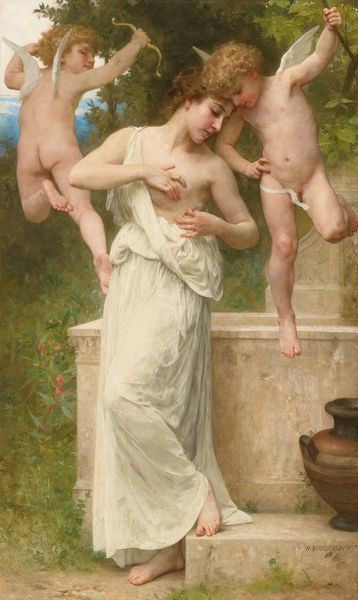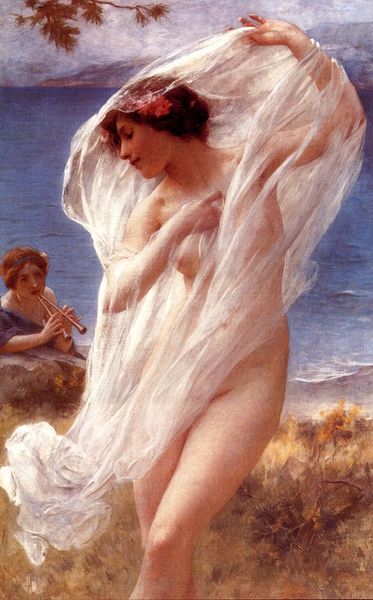
Copyright: Public Domain: Artvee
Curator: This is "The Glade," a canvas created around 1900 by Julius Leblanc Stewart, a painter well-regarded for his idyllic scenes. Editor: It evokes such a tranquil atmosphere, doesn't it? The soft light, the lush greenery...it’s as if we've stumbled upon a hidden world, perhaps one occupied by wood nymphs. Curator: Indeed. Stewart moved in circles that really embraced the “return to nature.” There's a potent nostalgia in the air at the turn of the century and a strong interest in Classical motifs. You can see it referenced here. But while idealized nudes were certainly part of the Academic tradition, this also aligns with the rise of Plein-Air, or open air painting that really valued capturing fleeting moments of everyday life outside of stuffy studios. Editor: You're right about that contrast. While on one level this appears classical in its approach to beauty and the nude, the composition suggests a much more relaxed gaze. But does the viewer benefit from witnessing an unguarded and vulnerable tableau? Curator: The arrangement creates a deliberate social hierarchy. Look at how the woman perched on the tree stump surveys her companions, who recline at her feet, literally and figuratively. The fact that these figures appear within a pastoral landscape gives context to the artwork's function at the time, perhaps to create a comparison between the elite and their subjects or possessions. Editor: And in that case, perhaps there's something more unsettling about its celebration of leisure. In an era where labour movements gained ground and gender norms are progressively contested, representing an exclusively white fantasy of feminine languor comes across as particularly tone-deaf. Curator: That's a fair challenge. What I find especially compelling is how Stewart uses light to unify the entire scene. Editor: For me, it's how "The Glade" pulls us into this complex conversation. Art is always embedded in the social issues of its moment. Curator: A powerful reminder of how tastes can evolve across time.
Comments
No comments
Be the first to comment and join the conversation on the ultimate creative platform.
